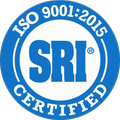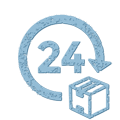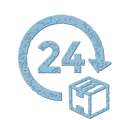Other Molybdenum Metal Alloys Include:
- TZM Molybdenum – 99% MO, 0.5% Ti, and .0.08 ZR
- Molybdenum / 50% Rhenium
- Molybdenum / 30% Tungsten
- Molybdenum / Copper
Machining Characteristics
Pressed and sintered or recrystallized molybdenum machines very similarly to medium hard cast iron. Wrought molybdenum machines very similarly to stainless steel. Molybdenum metal can be machined with conventional tools and equipment. However there are some ways that molybdenum differs from medium hard cast iron or cold rolled steel:
- It has a tendency to break out on the edges when cutting tools become dull
- It is very abrasive. This causes tools to wear much quicker than steel
Corrosion Resistance
Molybdenum corrosion resistance is very similar to tungsten. Molybdenum especially resists non-oxidizing mineral acids. It’s relatively inert to carbon dioxide, ammonia and nitrogen to 1100 C and also in reducing atmospheres containing hydrogen sulfide. Molybdenum has excellent resistance to corrosion from iodine vapor, bromine, and chlorine, up to clearly defined limits. It also offers excellent resistance to some liquid metals including lithium, bismuth, sodium and potassium.
Turning and Milling
For inside and outside turning, tools should be ground to angles and rakes similar to what is used for cast iron. Speeds up to 200 feet per minute, with a depth of cut up to 1/8”, are fine for rough turning. The feed should be .015 i.p.r. For finishing work, speeds tsp to 400 feet per minute, with a depth cut of .005” to .015”, and a feed of .005” to .010” should be used. It is extremely important, when turning, that the depth of the cut always be greater than .005”. If the depth is less, tool wear will be excessive. Sulphur based cutting oil may be used as a lubricant for roughing cuts, and kerosene Or sulphur base cutting oil can be used for finishing work. If lubricants are not used tool wear will be excessive. Sulphur base oils cannot be used for electronic parts. Chlorinated oil and solvents are excellent as a machining lubricant. Molybdenum tends to chip when being machined so care must be taken to prevent this. Work should be tightly chucked, tools rigidly supported and machines should be sufficiently strong and free from chatter or backlash. Plenty of coolant is essential. Face milling in general is not recommended. However, it can be done when necessary. Carbide tipped cutters muse be used. The speeds and depth of the cut should be similar to those used in lathe turning, except that the depth of cut should not exceed .050”. Molybdenum plates can be edge machined. It is recommended that plates greater than .050” should be edge machined Rather than sheared to your finished dimensions. This can be done either on a shaper or a milling machine, and the machining should be done along the edge, rather than across the edge. The molybdenum should he clasped between steel plates while being machined to avoid chipping.
Drilling, Tapping and Threading
Molybdenum can be drilled with high speed steel drills. However, carbide drills are recommended for deep drilling. When using high speed steel drills, the speed should be 30 to 50 feet per minute with a feed of .003 i.p.r. Cutting oils should be used for all tapping, drilling and threading operations. When threading the thread depth should not be more than 50 to 60 percent because molybdenum tends to chip, Molybdenum can be rolled treaded. The molybdenum material and the die should be heated to approximately 325 degrees F. Molybdenum can be heated to 325 degrees F in air without the danger of oxidation. However, molybdenum must not he heated to temperatures above 500 degrees F except in hydrogen or other protective atmospheres.
Sawing
Molybdenum saws easily with power bend saws and hacksaws. Approximately 1/8” should be allowed for kerf end 3/16” for the camber of heavier sections. Molybdenum may also be abrasive saw cut. The most effective blades are high speed steel with only the tooth area hardened.
EDM & ECM
Both of these processes work well when working with molybdenum. Stock removal Rates of up to .5 in(3)/min and +/- .0005” tolerances have been achieved with EDM. EDM wire cutting is used for intricate shapes. Electrochemical machining is normally capable of approximately 1 in(3) /min stock removal at 10,000 amps. ECM is especially
Effective for producing ultra-fine finishes.
Bending
Heated properly molybdenum can be formed into complex shapes. Sheets under .020 Inches thick can usually take a 180 degree bend at room temperature.
Welding
Pure molybdenum is handled in much the same way as tungsten. It really should be joined in a high purity atmosphere after an involved chemical cleaning process. If it is to be TIG welded, run off tabs should be utilized to prevent crater cracking at the end of each pass during welding. DCEN polarity is used and heat input is kept to a minimum. After welding, the material can be stressed relieved to restore ductility. Post grinding To remove bead ripples and surface contaminants will also help restore ductility. If Pure molybdenum is welded out in the open atmosphere, nitrogen and oxygen can be Absorbed in quantities sufficient to cause brittleness in the HAZ and subsequent joint Failure.






